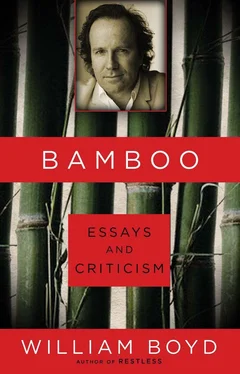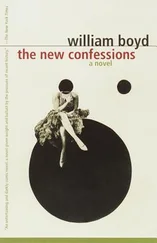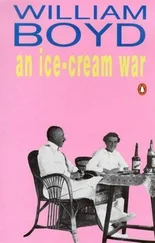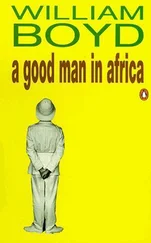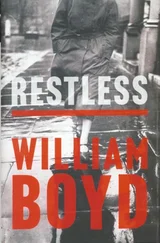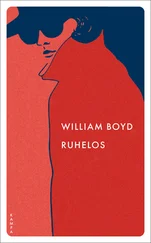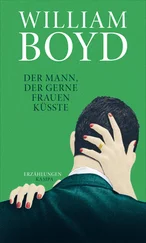X-certificate is really the only category that applies to warfare. It is the most disgusting, random, horrific experience that we humans visit on each other. Whether one writes about it or makes a film about it one’s prime duty, it seems to me, is to refuse to idealize, excuse or glorify what goes on. When you are young there is a tendency to see the glory and the glamour — which is why, perhaps, armies like their soldiers young.
Young men fight our wars, very young men. At the Battle of the Somme there were boys of sixteen (who had lied about their age) in the army. Think of yourself as a teenager and think what those boys had to live through and endure. It cuts at the soul like an adze.
ZZZZ. Sleep. Catch some zees, as the Americans say. We spent eight weeks making The Trench. There is no getting away from the fact that film-making is exhausting. When we finished I was tired. I went home and slept for three days.
1999
One of the funniest and best loved jokes in Evelyn Waugh’s Scoop occurs when the innocent hero, William Boot, who is nature correspondent for the Daily Beast, has his copy tampered with by his sister. William had written his weekly piece about badgers and wherever the word “badger” occurred his sister Priscilla had replaced it with “great crested grebe.” The copy had been filed with the mischief uncorrected and the outcry was predictable. “The mail had been prodigious. Some correspondents were sceptical, others derisive… A major in Wales challenged him categorically to produce a single authenticated case of a great crested grebe attacking young rabbits. It had been exceedingly painful.”
It was an equally painful decision for me, when I came to adapt Scoop for the screen, that I decided to leave the “badger” joke out. It is succinct and very funny on the page but I felt that it simply could not work on the screen. The only way for it to function at all was the laborious one of presenting a close-up of William’s badger article, hold on it long enough for audiences to read enough of it to get the drift, then hold on it still further as Priscilla crossed out “badger” and wrote in “great crested grebe.” Pause to allow people to read the new copy and savour its absurdity. Cut to printed newspaper containing the vandalized article, and so on.
I use the story to illustrate just one of the many problems faced by a screenwriter adapting a much loved classic. The only way film could serve the novel in this case was to turn it into a visual “book.” This is a joke that works only when it is read. And it would have to be read on the screen too. It seemed to me to be a negation of what film was all about to ask people to read screeds of text from a screen to try and reproduce a joke that would, in any event, fall flat, so ponderous was its execution. When Scoop was broadcast critics predictably bayed for blood — how could anyone be so crass as to leave out the “badger” joke?
The adaptor is really on a hiding to nothing. The novel confers a near total writing freedom, the form is unbelievably generous and capacious. Screenwriting, by consequence, and adapting even more so, offers only a collection of handicaps and constraints. If novel writing is like swimming in the sea, then adapting is like swimming in a bath.
The first and most daunting constraint is one of length. When you write a film the rule-of-thumb calculation is: one page equals one minute. Consequently, very few screenplays exceed 120 pages. By my calculation between 60 to 70 percent of a novel is left out when it makes the transfer to the screen. Your first task as a screenwriter when your chosen text is presented to you is to reread the novel, pencil in hand, crossing out as much as possible.
In the recent adaptation of Martin Chuzzlewit, for example, David Lodge made the wise decision to refer only obliquely to the American scenes (time has not served them well, they read desperately unfunnily today). He thereby excised a significant chunk of the novel and saved the production huge sums of money. For, as well as length, two other curbs crowd round the tormented adaptor — logistics and budget, though often the two coincide. When I came to adapt Mario Vargas Llosa’s wonderful novel Aunt Julia and the Scriptwriter the very first thing I was told was that this film of the Peruvian novel would not be set in Peru. Similarly, anything in a novel that requires a cast of thousands or period detail or complex special effects takes on the lineaments of a sacrificial lamb. It either goes out or is drastically transformed: the battalion becomes a platoon, the Champs Elysées becomes a side street, a surreal nightmare becomes a sweat-drenched man tossing and turning in bed. Boil down, edit, reduce, discard, cut back, conflate — these are the hectoring instructions that echo in the adaptor’s increasingly frustrated head.
And it is a job that any screenwriter finds very hard to escape from. I would reckon that three quarters of all films made are adaptations of some sort — certainly that proportion conforms to my own career. Cinema loves literature for two main reasons. First, world literature is a vast warehouse of ready-made stories, a great many of which are absolutely free. And, second, in most cases the public has already declared its taste. Any producer suggesting an adaptation of Anna Karenina, for example, is unlikely to be regarded as a vulgarian. Studios and producers are cautious animals, and there’s nothing they like better than climbing aboard a bandwagon or gravy train. A successful or much loved book is perceived as already being on a roll.
So call in a screenwriter and set him or her to work. It is a peculiar craft, demanding particular skills. There is an injunction often presented to learner sculptors confronted with their first block of marble which is to “try to find the statue in the stone.” The adaptor, to extend the analogy, is like a sculptor presented with a finished statue, let’s say Michelangelo’s David, and enjoined to fashion another David from the original. The key to the adaptor’s job, then, is to try and find “the statue in the statue.” You have your mallet and chisel in hand and you have to chip away at the much venerated, not to say iconic, original and make another David. The new statue will certainly be smaller and no doubt cruder, and inevitably, in the chipping away process, it will have lost an arm or other appendages, but if all has gone well the original statue will be called to mind. But it is never going to be a faithful or slavish copy, the very nature of the job rules that out.
Vladimir Nabokov, contemplating Stanley Kubrick’s film of his novel Lolita, diplomatically professed himself well pleased. If ever there was a novel that would radically alter and diminish in its transition to the screen, then Lolita was that novel. But Nabokov, who had tried to adapt the novel himself, and whose script had been turned down, understood the problems inherent in the adaptor’s dogged and difficult task. Film versions of novels, Nabokov said, should not strive to reproduce exactly what was on the printed page, they should aim to be “vivacious variants” of the original. The creating of “vivacious variants” is fundamentally what screen adapting is all about, and with that in mind one should never judge the film by the book, but let the film stand on its own.
1995
At the foot of the greasy pole that is the Hollywood power structure toil the D-boys and the D-girls. The “D” stands for Development and what these minions do is provide “coverage,” in other words write reports on the hundreds of filmscripts that are submitted routinely day in day out to the studios and independent film companies in the hope that someone somewhere will like them.
Читать дальше
